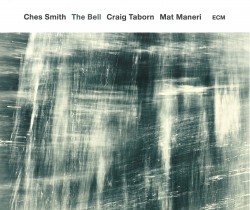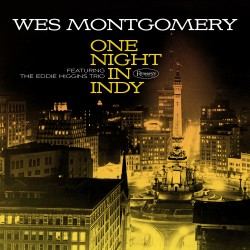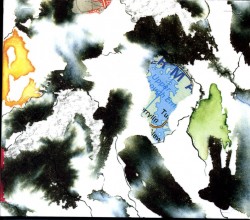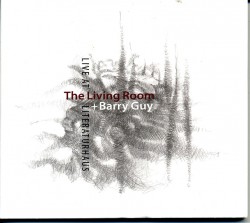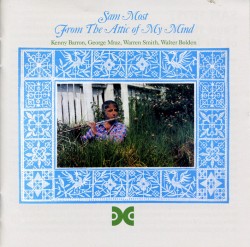Young Blood Still Pumps in Jazz
Child prodigies really don’t exist in improvised music. Occasionally there may be some youngster known for jazz playing. But unlike other musics which depend on a performer having a cute image or being able to copy what’s on the score paper, improvising demands full exposure of an inner self. Lacking maturity, the majority of these tyros soon disappear. That doesn’t mean that there aren’t young improvising musicians. But to create notable works, like the skills of exceptional actors or visual artists, true musical talent is almost always refined during the player’s 20s or 30s.
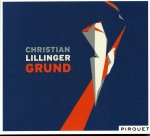 Take German percussionist Christian Lillinger, 31, for instance. An in-demand sideman and leader of smaller bands for the past few years, the septet he assembles on Grund (Pirouet PIT 3086 pirouet.com) allows him to craft interlocking arrangements for the 11 tunes he composed. Except for his singular incisive drum beats which underline or put into bold face the cumulative sound, Grund is an exercise in parallelism. There are two saxophonists, Pierre Borel and Tobias Delius; two double bassists, Jonas Westergaard and Robert Landfermann; while Christopher Dell’s vibraphone and Achim Kaufmann’s piano are the chordal instruments. Like a well-drilled military unit this is a group effort. Lean and taut, each of the drummer’s tunes is directed from behind via stick-slapping nerve beats, cymbal taps or positioned rolls, allowing Kaufmann’s piano or tongue-slapping reeds to create the declarative theme statement, with Dell’s vibes scattering reflective tone colours like new paint glittering on a surface. Most reflective of the moods the seven engender are the adjoining Blumer and Malm. The latter is pitched so that it sounds like a Jazz Messengers LP played at 45 rpm with Delius’ sharp clarinet tones adding atonality, while the vibes lighten the mood. When barroom piano-styled pumps and dual horn flutter tonguing threaten to derail the narrative, regular drum thwacks push the theme back on track. In contrast Blumer is organized like a gentle chamber piece with first vibes, then piano and finally swaying horns voicing the melody. What could be jejune is transformed as the low-energy narrative is agitated by a clip-clop drum beat. Buzzing dual bass lines, rolling piano chords or atonal sax explorations are prominent elsewhere. But whether the results are balladic or bombastic, the spackle-like fills from Lillinger’s percussion patterns consistently and distinctively glue the parts together.
Take German percussionist Christian Lillinger, 31, for instance. An in-demand sideman and leader of smaller bands for the past few years, the septet he assembles on Grund (Pirouet PIT 3086 pirouet.com) allows him to craft interlocking arrangements for the 11 tunes he composed. Except for his singular incisive drum beats which underline or put into bold face the cumulative sound, Grund is an exercise in parallelism. There are two saxophonists, Pierre Borel and Tobias Delius; two double bassists, Jonas Westergaard and Robert Landfermann; while Christopher Dell’s vibraphone and Achim Kaufmann’s piano are the chordal instruments. Like a well-drilled military unit this is a group effort. Lean and taut, each of the drummer’s tunes is directed from behind via stick-slapping nerve beats, cymbal taps or positioned rolls, allowing Kaufmann’s piano or tongue-slapping reeds to create the declarative theme statement, with Dell’s vibes scattering reflective tone colours like new paint glittering on a surface. Most reflective of the moods the seven engender are the adjoining Blumer and Malm. The latter is pitched so that it sounds like a Jazz Messengers LP played at 45 rpm with Delius’ sharp clarinet tones adding atonality, while the vibes lighten the mood. When barroom piano-styled pumps and dual horn flutter tonguing threaten to derail the narrative, regular drum thwacks push the theme back on track. In contrast Blumer is organized like a gentle chamber piece with first vibes, then piano and finally swaying horns voicing the melody. What could be jejune is transformed as the low-energy narrative is agitated by a clip-clop drum beat. Buzzing dual bass lines, rolling piano chords or atonal sax explorations are prominent elsewhere. But whether the results are balladic or bombastic, the spackle-like fills from Lillinger’s percussion patterns consistently and distinctively glue the parts together.
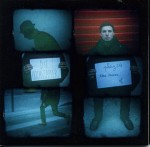 French alto saxophonist Pierre Borel, 28, is also one of the voices in the Berlin-based quartet Die Hochstapler, along with fellow Gaul, trumpeter Louis Laurain, 31; Italian bassist Antonio Borghini, 38; and German drummer Hannes Lingens 35. Dedicated to aleatoric strategies that mix notation and improvisation, Die Hochstapler’s The Music of Alvin R. Buckley (Umlaut ub007 umlautrecords.com) is inspired by the probability theory of researcher and musician Buckley (1929-1964) who apparently abandoned music after an encounter with Karlheinz Stockhausen. Never particularly jazzy, although the concluding Playing Cards easily fits into that idiom with walking bass and parry-and-thrust movement from the horns as if participants in a speed-chess match, the CD’s five tunes are instead concerned with how many unexpected strategies can be teased out of an initial theme statement. Lingens’ rhythm accents are placed with clocklike regularity or expressed in free metre to intensify the steaming emotionalism from Laurain and Borel. A further trope slyly combines martial-like beats with oblique exaggerations related to modern chamber recitals. Layered horn tones are particularly evident on…ce que le ver est a la pomme as phrasing ranges from those replicating wind-shaking trees to fortissimo porcine snorts. Elaborating the tune as they deconstruct it, the saxophonist’s squeaks, runs and the drummer’s press rolls move in and out of bop emulation before torrid trumpet toots thrust the piece back to swing underpinnings. Other performances include players lobbing divergent sequences until a melody connects as if plopping pieces in winning order in a game of Chinese checkers. Dribbling reed vibrations, smoothly bowed bass strings and focused paradiddles suggest calming cool jazz swing on every bird must be catalogued; or an unexpected foot-tapping melody can arise after bellicose brass plunger tones and body tube sax growls are regularized into an upbeat theme on le musician est au son.
French alto saxophonist Pierre Borel, 28, is also one of the voices in the Berlin-based quartet Die Hochstapler, along with fellow Gaul, trumpeter Louis Laurain, 31; Italian bassist Antonio Borghini, 38; and German drummer Hannes Lingens 35. Dedicated to aleatoric strategies that mix notation and improvisation, Die Hochstapler’s The Music of Alvin R. Buckley (Umlaut ub007 umlautrecords.com) is inspired by the probability theory of researcher and musician Buckley (1929-1964) who apparently abandoned music after an encounter with Karlheinz Stockhausen. Never particularly jazzy, although the concluding Playing Cards easily fits into that idiom with walking bass and parry-and-thrust movement from the horns as if participants in a speed-chess match, the CD’s five tunes are instead concerned with how many unexpected strategies can be teased out of an initial theme statement. Lingens’ rhythm accents are placed with clocklike regularity or expressed in free metre to intensify the steaming emotionalism from Laurain and Borel. A further trope slyly combines martial-like beats with oblique exaggerations related to modern chamber recitals. Layered horn tones are particularly evident on…ce que le ver est a la pomme as phrasing ranges from those replicating wind-shaking trees to fortissimo porcine snorts. Elaborating the tune as they deconstruct it, the saxophonist’s squeaks, runs and the drummer’s press rolls move in and out of bop emulation before torrid trumpet toots thrust the piece back to swing underpinnings. Other performances include players lobbing divergent sequences until a melody connects as if plopping pieces in winning order in a game of Chinese checkers. Dribbling reed vibrations, smoothly bowed bass strings and focused paradiddles suggest calming cool jazz swing on every bird must be catalogued; or an unexpected foot-tapping melody can arise after bellicose brass plunger tones and body tube sax growls are regularized into an upbeat theme on le musician est au son.
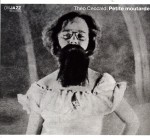 Another musician who has created his own sound is French violinist/violist Théo Ceccaldi, 29, whose quartet on Petit Moutarde (ONJazz JP-001 onj.org), performs music he composed inspired by French director René Clair’s 1924 Dadaist short film Entr’acte. The CD is twice the length of the movie, but its initial tracks are crafted organically enough to accompany the film. (Try it yourself with a muted Internet version of Entr’acte). But Petit Moutarde is much more than that. Balancing his superior training in notated music with the jazz sophistication of Alexandra Grimal, 35, who plays tenor, soprano and sopranino saxophones plus vocalizes wordlessly here, the music isn’t some hybrid jazz/classical soundtrack but a melange that stands on its own. With drummer Florian Satche both time-keeping and layering the tracks with cymbal scratches and other unconventional percussion techniques plus bassist Ivan Gélugne alternating between string slaps and rubbing arco concordance with Ceccaldi or Grimal, visuals aren’t necessary. Although some portions of the tracks are purposefully as herky-jerky as the movements in Clair’s film, overall blistering modernism overcomes bal musette-like nostalgia. Bowed bass strings make a proper backing for the fiddler’s Paganini-like display on Petit Wasabi for instance, as curbed and cantilevered swipes fly with upwards enthusiasm. Double counterpoint from violin and saxophone complement one another like steak and frites on Petit Chipotle, as Grimal’s fragile stutters are reflected by Ceccaldi’s delicate stops. Swing can also be displayed at breakneck speed as on Petit Harissa, when tenor saxophone tonal squirts and fused staccato rubbing from double bass and violin strings join focused press rolls to produce limitless excitement.
Another musician who has created his own sound is French violinist/violist Théo Ceccaldi, 29, whose quartet on Petit Moutarde (ONJazz JP-001 onj.org), performs music he composed inspired by French director René Clair’s 1924 Dadaist short film Entr’acte. The CD is twice the length of the movie, but its initial tracks are crafted organically enough to accompany the film. (Try it yourself with a muted Internet version of Entr’acte). But Petit Moutarde is much more than that. Balancing his superior training in notated music with the jazz sophistication of Alexandra Grimal, 35, who plays tenor, soprano and sopranino saxophones plus vocalizes wordlessly here, the music isn’t some hybrid jazz/classical soundtrack but a melange that stands on its own. With drummer Florian Satche both time-keeping and layering the tracks with cymbal scratches and other unconventional percussion techniques plus bassist Ivan Gélugne alternating between string slaps and rubbing arco concordance with Ceccaldi or Grimal, visuals aren’t necessary. Although some portions of the tracks are purposefully as herky-jerky as the movements in Clair’s film, overall blistering modernism overcomes bal musette-like nostalgia. Bowed bass strings make a proper backing for the fiddler’s Paganini-like display on Petit Wasabi for instance, as curbed and cantilevered swipes fly with upwards enthusiasm. Double counterpoint from violin and saxophone complement one another like steak and frites on Petit Chipotle, as Grimal’s fragile stutters are reflected by Ceccaldi’s delicate stops. Swing can also be displayed at breakneck speed as on Petit Harissa, when tenor saxophone tonal squirts and fused staccato rubbing from double bass and violin strings join focused press rolls to produce limitless excitement.
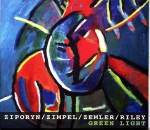 More excitement is apparent on Green Light (MultiKulti MPTO 12 multikulti.com), where Poles, clarinetists Wacław Zimpel, 32, and percussionist Hubert Zemler 35, play on equal terms with well-known American new music improvisers, clarinetist Evan Ziporyn and guitarist Gyan Riley. Beginning as if the tracks present a sonic slide show of someone’s recent travels, tambura, frame drum and bell-like echoes intermingle with Western chamber music tropes including delicate guitar plinks and reed tone layering. The CD reaches an early climax with the instant composition Chemical Wood, as Ziporyn pecks out spangled bent notes through the harsh continuum created by Zimpel blowing both melody and drone from an alghoza or Punjabi woodwind. Since the idea of Green Light is cooperative not solipsistic, the American clarinetist joins in congruent improvisation with his Polish counterpart on tunes like Melismantra. Backed by hard strokes from Riley’s guitar, reed tones are tensely intermingled, with Ziporyn’s clear tones puffing out lines in unison with Zimpel’s rugged altissimo gulps. Even more cross-culturally cooperative is Gupta Gamini, the Zimpel-composed final track. Processional, with echoes of Polish as well as subcontinent folk music, the narrative is kept in motion by tremolo layering from the two horns. Using electric guitar, Riley’s corrosive licks reverberate like torn electrical wires adding a barbed interface. After a pause, the theme finally relaxes into a coda that is a dual showpiece for the reeds’ spectacular upward flutter tonguing.
More excitement is apparent on Green Light (MultiKulti MPTO 12 multikulti.com), where Poles, clarinetists Wacław Zimpel, 32, and percussionist Hubert Zemler 35, play on equal terms with well-known American new music improvisers, clarinetist Evan Ziporyn and guitarist Gyan Riley. Beginning as if the tracks present a sonic slide show of someone’s recent travels, tambura, frame drum and bell-like echoes intermingle with Western chamber music tropes including delicate guitar plinks and reed tone layering. The CD reaches an early climax with the instant composition Chemical Wood, as Ziporyn pecks out spangled bent notes through the harsh continuum created by Zimpel blowing both melody and drone from an alghoza or Punjabi woodwind. Since the idea of Green Light is cooperative not solipsistic, the American clarinetist joins in congruent improvisation with his Polish counterpart on tunes like Melismantra. Backed by hard strokes from Riley’s guitar, reed tones are tensely intermingled, with Ziporyn’s clear tones puffing out lines in unison with Zimpel’s rugged altissimo gulps. Even more cross-culturally cooperative is Gupta Gamini, the Zimpel-composed final track. Processional, with echoes of Polish as well as subcontinent folk music, the narrative is kept in motion by tremolo layering from the two horns. Using electric guitar, Riley’s corrosive licks reverberate like torn electrical wires adding a barbed interface. After a pause, the theme finally relaxes into a coda that is a dual showpiece for the reeds’ spectacular upward flutter tonguing.
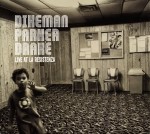 There’s only one reedist, tenor saxophonist John Dikeman, 32, on Live at La Resistenza (El Negocito Records eNR041 elnegocitorecords.com), but the American-in-Amsterdam forces out enough pure energy to keep up with one of American jazz’s most accomplished and longstanding rhythm sections: bassist William Parker and drummer Hamid Drake. Recorded at a Ghent concert, the two long improvisations on Live appear as inevitable as forces of nature. With cyclone-like ferocity Dikeman splays, smears and sputters bent notes and irregular vibrations into the mix, with a see-saw efficacy, reminiscent of mid-1960s Sonny Rollins. Digging taut snorts from the darkest parts of his horn with the same facility as altissimo glissandi are sourced, his solos are as powerful and cerebral as a military tactician. Parker’s pulsating beat is as precise as items placed in both weighing pans of a balanced scale, with a small portion of Invocation given over to his solo showcase. Otherwise Parker’s string stability appropriately moors the saxophonist’s frequent triple tonguing and vibrated shrieks. When WY Funk, the final track, reaches a climax, Drake’s polyrhythmic cymbal explorations are replaced by a steady backbeat which weds timed swing with timbral striving. Intensity and relief arrive in equal measure by the finale. Overall, with younger players like these on the scene, the future of improvised music appears secure.
There’s only one reedist, tenor saxophonist John Dikeman, 32, on Live at La Resistenza (El Negocito Records eNR041 elnegocitorecords.com), but the American-in-Amsterdam forces out enough pure energy to keep up with one of American jazz’s most accomplished and longstanding rhythm sections: bassist William Parker and drummer Hamid Drake. Recorded at a Ghent concert, the two long improvisations on Live appear as inevitable as forces of nature. With cyclone-like ferocity Dikeman splays, smears and sputters bent notes and irregular vibrations into the mix, with a see-saw efficacy, reminiscent of mid-1960s Sonny Rollins. Digging taut snorts from the darkest parts of his horn with the same facility as altissimo glissandi are sourced, his solos are as powerful and cerebral as a military tactician. Parker’s pulsating beat is as precise as items placed in both weighing pans of a balanced scale, with a small portion of Invocation given over to his solo showcase. Otherwise Parker’s string stability appropriately moors the saxophonist’s frequent triple tonguing and vibrated shrieks. When WY Funk, the final track, reaches a climax, Drake’s polyrhythmic cymbal explorations are replaced by a steady backbeat which weds timed swing with timbral striving. Intensity and relief arrive in equal measure by the finale. Overall, with younger players like these on the scene, the future of improvised music appears secure.
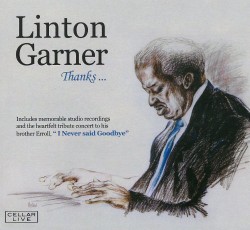 Thanks...
Thanks...

